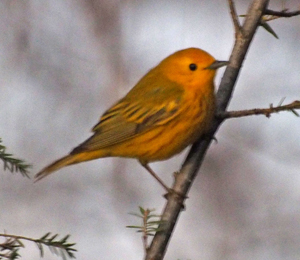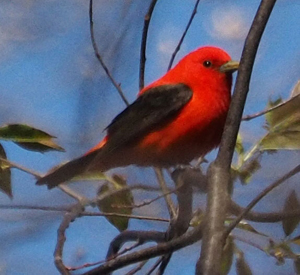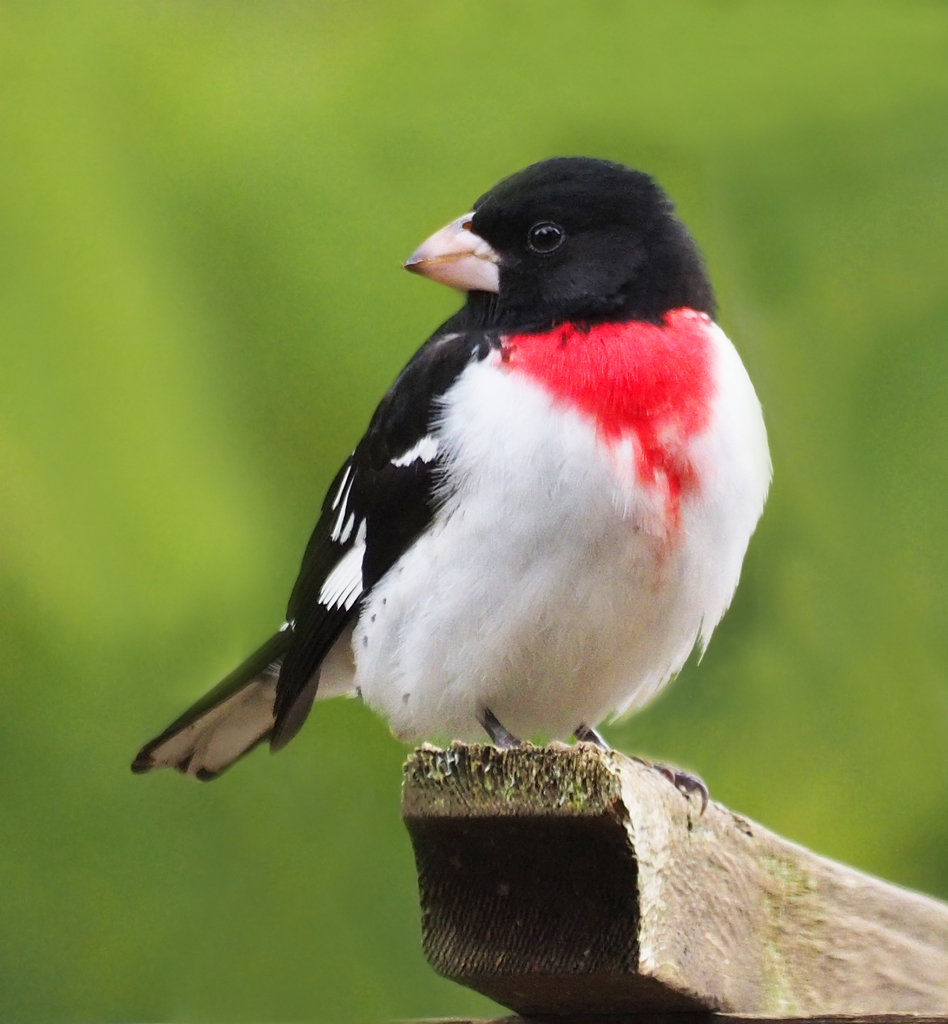
This indigo bunting seems to be molting a little because it has some brown in its feathers. When they are in full plumage the males are brilliant blue with black wings
Late April and May are prime times for the spring migration of birds in southern Michigan. When it is warm enough for tiny bugs to appear, one can see many birds not normally seen as they migrate further north for breeding. Warblers are small birds that search for insects in forests and yards. Some of the warblers that we see in our woods are myrtle warblers which are also called yellow-rumped warblers, and the beautiful yellow warbler. Myrtle warblers are seen in greater numbers here than yellow warblers. They are black, white, and brown with a yellow spot on their tail which is visible when flying. The yellow warbler is mainly yellow with rusty stripes on their chest. Do not confuse them with gold finches which are yellow and black and will come to your thistle feeders.
Other migrants are the rose-breasted grosbeak and the rarely seen scarlet tanager.
The rose-breasted grosbeak will visit your feeders and love sunflower seeds. We also discovered that at times they will eat fruit and sugar water from hummingbird feeders. I photographed a grosbeak that sat on our hummingbird window feeder for at least 5 minutes. I couldn’t believe he sat there that long. We also observed him eating jelly from our oriole orange feeder. It seems we always learn something new when observing the birds in our area. I observed the scarlet tanager in the woods behind our home. He was high in the trees snatching insects out of the air. It was the first time I had ever seen one and I tried to get a good photo. It was difficult as he was always on the move. The male is brilliant red all over with black wings, but the female is a dull olive color.
As I was writing this article we observed another rare sight near our feeders. There were three indigo buntings, which if you have never seen one, are in for a treat. The males are the most brilliant blue you have ever seen with a little black on their wings. I was not able to get a photo, but I will keep trying. We are seeing many migrants at and around our feeders today and have observed that after a heavy rain in the early spring the birds are more active. We also observed at least six orioles around our feeders this morning, both male and female.
-Diane Deming













